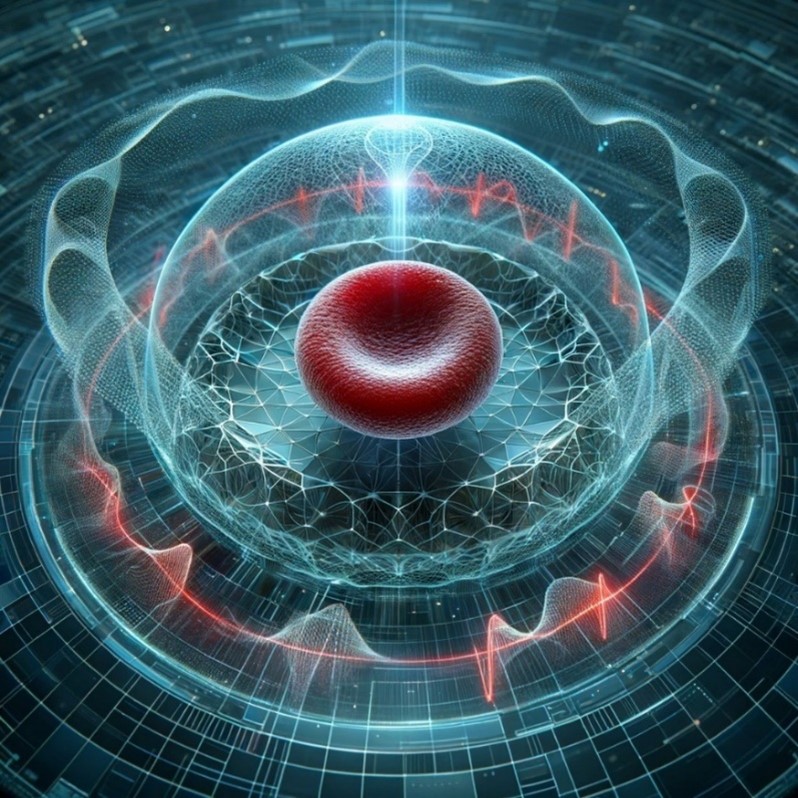In a new study published in Science magazine, a team of researchers led by the Universities of Barcelona and Padua, and with the participation of the Universities Complutense and Francisco de Vitoria in Madrid and Göttingen University, have unveiled a novel methodology for the measurement of entropy production at the nanoscale. Researchers have measured the heat flow of single red blood cells, known as the entropy production rate, finding an elusive 10-15 calories per second.
Entropy is often associated with disorder and chaos. Still, in biology, it is related to energy efficiency and is closely linked to metabolism, the set of chemical reactions that sustain life. “Characterizing the entropy production in living systems is crucial for understanding the efficiency of energy conversion processes” says Felix Ritort, lead researcher of the study from the Faculty of Physics and Institute of Nanoscience and Nanotechnology of the University of Barcelona (IN2UB) (The Small Biosystems Lab).
There is great interest in measuring entropy production in physical and biological systems relevant to climate change, actively dissipating systems and living cells. This breakthrough has far-reaching implications for understanding metabolism and energy transduction in living systems. “Heat is a symptom of cell health, and this finding could open a new way to determine tissue health”, concludes Ritort.
Researchers have measured the heat flow from the active metabolic forces inside the blood cells and the emerging flickering of the cell membrane. The methodology, based on measurements of the fluctuations of particles’ motion, has been tested experimentally in optically trapped colloidal particles and applied to red blood cells. For the latter, the authors used experimental approaches based on optical manipulation, optical sensing, and ultrafast live-imaging microscopy.
Ivan Di Terlizzi from the University of Padova and Max Plank Institute and Marta Gironella from the University of Barcelona and Gothenburg University, co-signed as first authors of the paper. Marco Baiesi from the University of Padua led the theoretical calculations. Three experimental teams carried out experimental tests: the Small Biosystems Lab led at the University of Barcelona by Felix Ritort, Timo Betz’s group at the University of Göttingen, and the group led by Francisco Monroy from the Universidad Complutense de Madrid and Instituto de Investigación Sanitaria Hospital 12 de Octubre, in collaboration with Diego Herraez from the University Francisco de Vitoria in Madrid.
Article reference
I. Di Terlizzi*, M. Gironella*, D. Herraez-Aguilar, T. Betz, F. Monroy, M. Baiesi, and F. Ritort. “Variance Sum Rule for Entropy Production”. Science Magazine, 1st March 2024. DOI: 10.1126/science.adh1823
Image generated by AI with the evocative of a red blood cell dissipating heat to the environment

